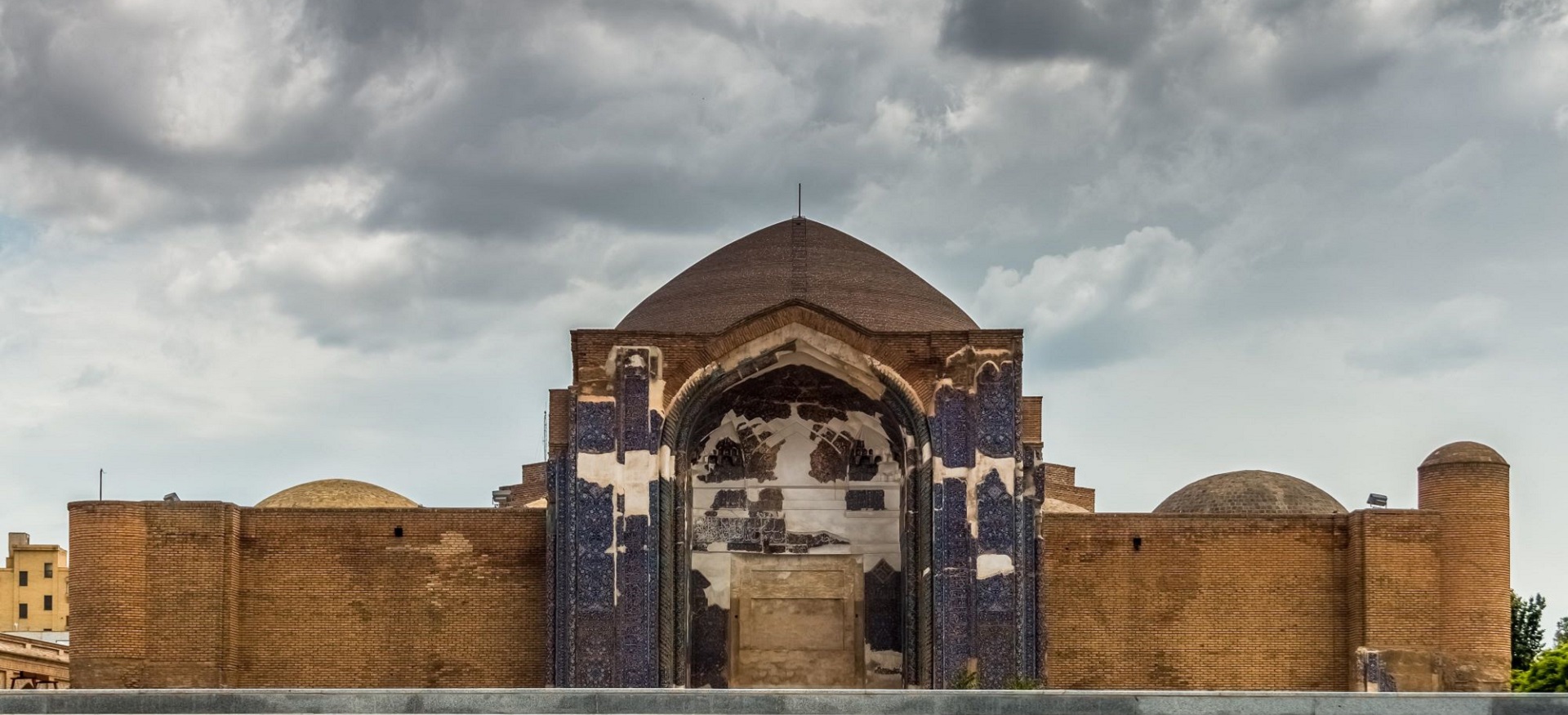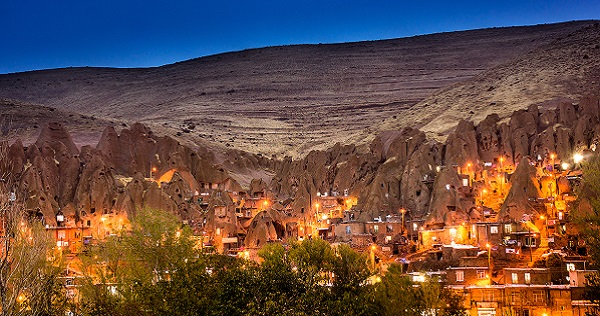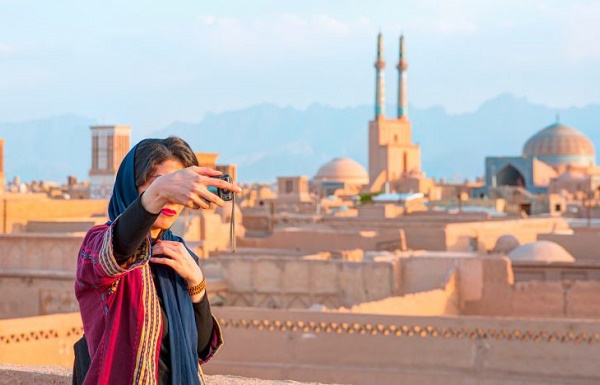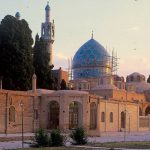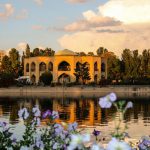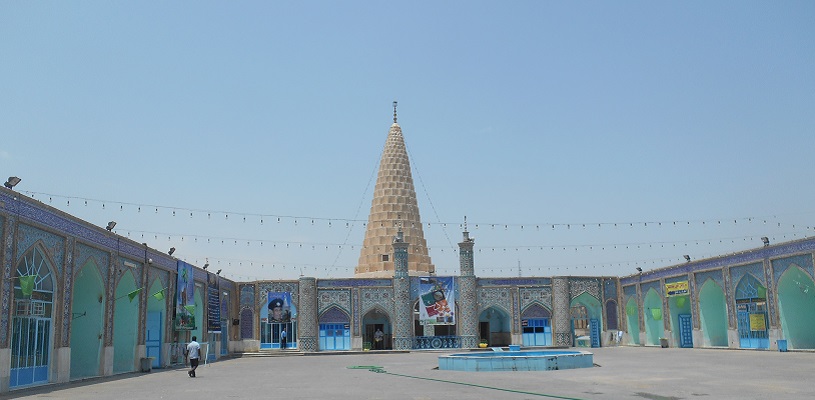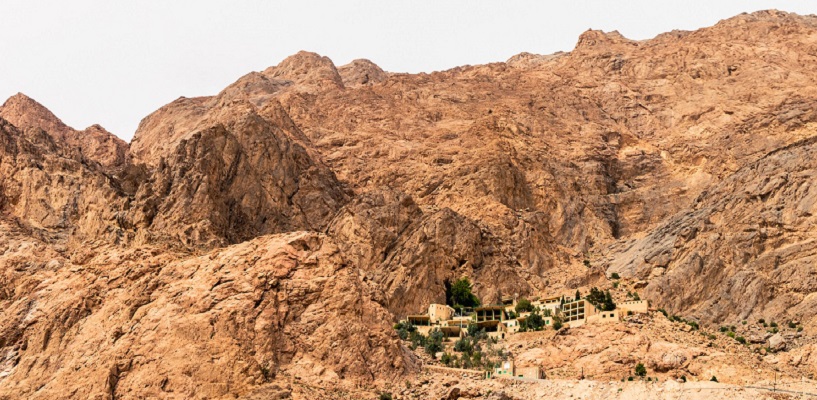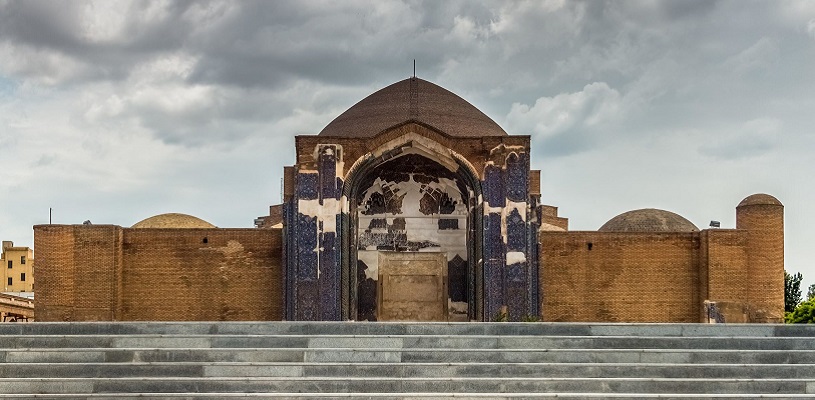
The Blue Mosque of Tabriz, Iran (Kabud Mosque)
It is time we visited one of the four blue mosques in the world. The Blue Mosque, also known as Kabud Mosque is a masterpiece of Iranian-Islamic architecture in Tabriz. This mosque, which owes its fame to its stunning tilework, has a history of 600 years old. Above all, its azure color reflects the sky, which fills any visitor with spiritual joy. The mosque is an extraordinary attraction which will astonish you with its amazing mosaic tilework. Ready for a tour inside the Blue Mosque?
Contents
- 1 Why Visit Tabriz Blue Mosque
- 2 The Story of Iran Blue Mosque
- 3 What to Expect in the Magical Blue Mosque
- 4 Mystical Journey of the Colors in Kabud Mosque – Tabriz Blue Mosque
- 5 Tabriz Blue Mosque – A Mosque With Several Domes
- 6 More about Blue Mosque
- 7 Like to see the Blue Mosque of Tabriz?
- 8 Blue Mosque Tours
- 9 the Blue Mosque on Map
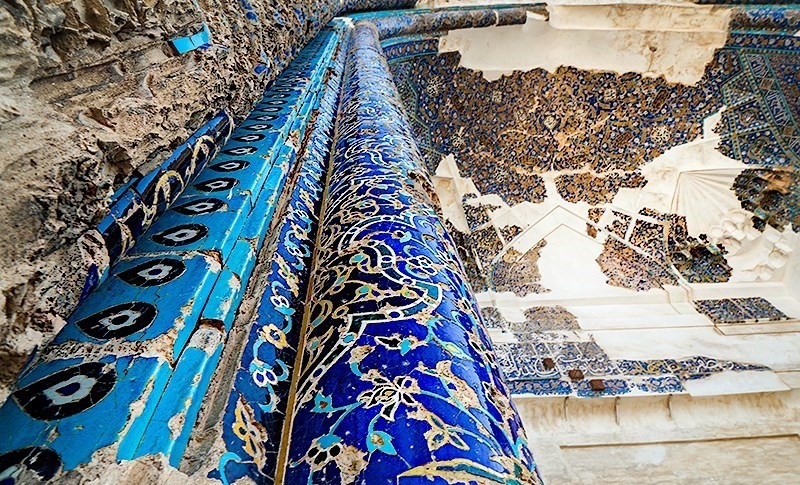
Portal’s Tilework Photo @ Vahid Ahmadi -Blue Mosque Tabriz
Why Visit Tabriz Blue Mosque
- Tabriz Blue Mosque is one of the four blue mosques in the world, with 600 years of history.
- The rare combination of the blue tiles and bricks as well as the golden patterns with the magic of architecture and design fascinates any visitor.
- Despite the cold climate of Tabriz, the mosque could function during all seasons, due to the ingenious architecture of the mosque.
- The mosaic tileworks adorning the interior and exterior of the mosque are eye-catching and comparable to those in Jameh Mosque of Isfahan.
- Domes in the mosque, specifically the main dome with an octagonal basis exhibit artistic architecture.
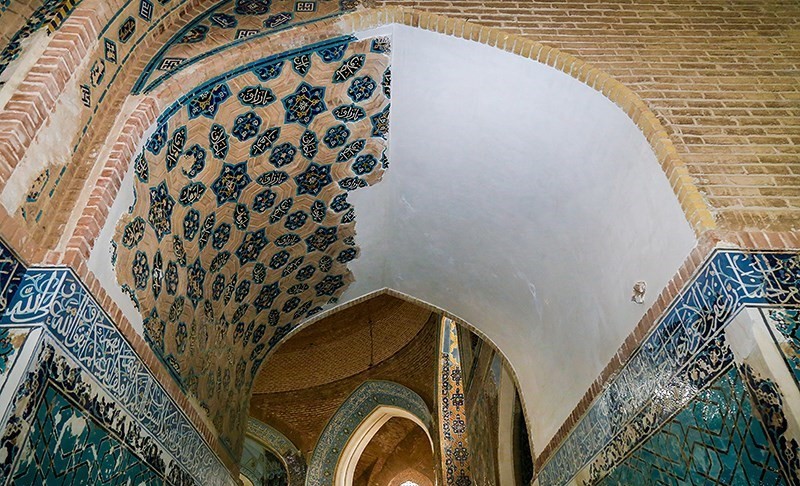
The Story of Iran Blue Mosque
In the fifteenth century, Jahanshah, the Kara Koyunlu ruler, ordered the construction of the Blue Mosque in his capital city, Tabriz. Jahanshah was a fan of urban development and art, who ordered the construction of a multitude of fine architectural structures. Notably, he built the mosque with the supervision of his wife or daughter. Indeed, the mosque is part of a larger ensemble, from which only a mosque and mausoleum has survived. It took markedly thirty years to complete the construction of the mosque. The blue mosque has witnessed many ups and downs over the history; however, it still shows off its extraordinary beauties.
Although the mosque looks similar to ottoman architectural structures, Iranian architects built an Iranian structure by integrating the ottoman architecture and the indigenous materials and skills. The roof chiefly features a brick structure and Azari architectural style. This style, which dates back to the thirteenth century, exhibits mosaic tilework adorning the domes as well as the exteriors and interiors, in addition to a multitude of colors employed. Above all, a major architectural element of the mosque is Gonbadkhane (a space under the dome). Gonbadkhane or the main Shabestan (prayer hall) is located in the middle of a rectangular courtyard and other Shabestans surround it. Notably, among the ingenious architectural features of the mosque has been its all-year-round functionality.
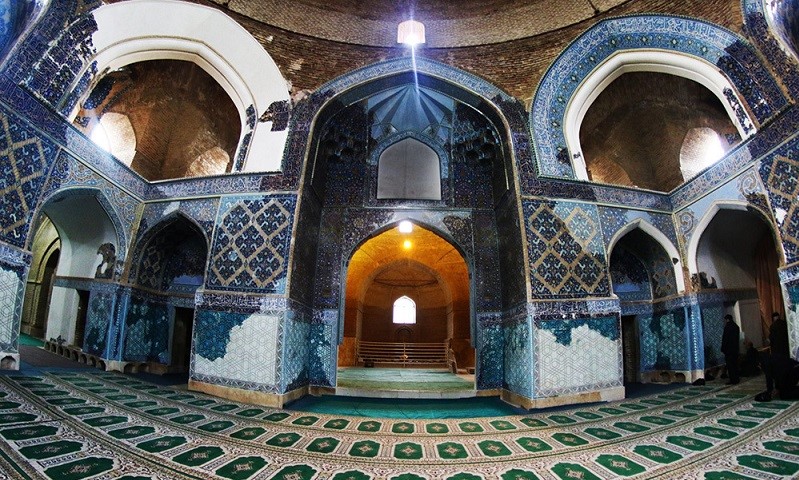
Main Shabestan Photo – Tabriz Blue Mosque
What to Expect in the Magical Blue Mosque
Firstly, before you enter the mosque, you will behold a pleasing flower bed. The entrance consists of a high, flamboyant portal with an inscription. Indeed, the inscription features the alternative name of the mosque, that is “Mozaffarieh edifice”, as well as the name of the tiler and the tiling’s completion date. Moreover, in the middle of the yard, lies a pond, which people could use for ablution. Subsidiary Shabestans with their marble floors surround the courtyard. In the center of the yard, the main Shabestan or Gonbadkhaneh stands out with its partial azure tilework mixed with golden color. Inscriptions with verses from the holy Quran embrace the Gonbadkhaneh, which are reminiscent of the Jahanshah’s victories.
Inside the Gonbadkhaneh and below the columns, you will behold several small cases carved to the ground. It is interesting to know that these cases function as shoe storage containers. Also, you can behold the inscriptions with Quranic verses adorning the Mihrab (the place where the Islamic leader stands). At the present time, Gonbadkhaneh exhibits a small door which opens up to a smaller yard, where a burial vault lies. Rumor has it that tombs of Jahanshah and his wife lie in the vault. You can also visit the gift shops for handicrafts such as pottery with the Blue Mosque motif.
Mystical Journey of the Colors in Kabud Mosque – Tabriz Blue Mosque
Kabud Mosque exhibits subtle, artistic, and marvelous architecture as well as tilework. Turquoise and azure mosaic tiles, fine scripts, stuccowork and Muqarnas (a form of ornamented vaulting), integration of the brick with the blue tiles and golden patterns, in addition to the innovative geometric and arabesque designs demonstrate the Iranian-Islamic architecture of the mosque. Tiles look blue from a far distance, though, other colors such as golden, white, and green also are mixed with the main blue color.
The wonderful mosaic tilework in the Gonbadkhaneh reaches its pinnacle, as if a skillful painter has drawn it and covered it with the brick exterior to protect it against distortion. Particularly, the tilework of Mihrab is an innovative manifestation of Persian art, which shows off mosaic tilework with arabesque patterns in turquoise, azure, golden, and white colors. Besides, the azure-golden tilework adorning the walls and the roof of the burial vault is so astonishing that one might claim the mosque takes its name from the amazing tilework in this structure.
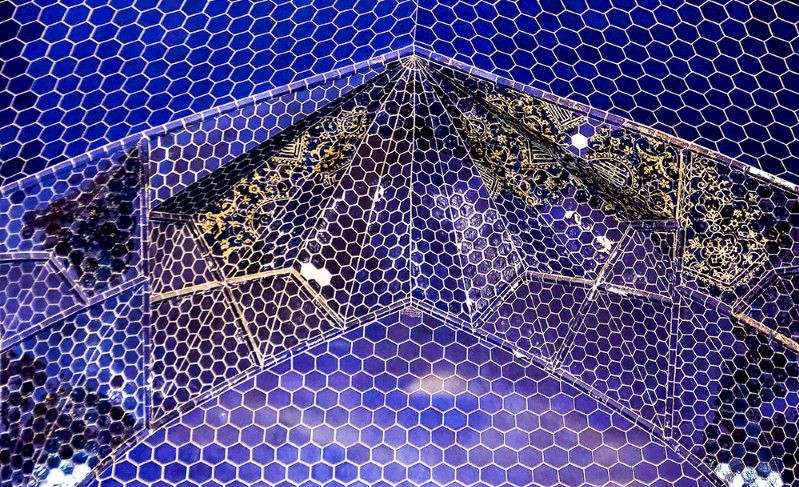
Tilework of the small Shabestan Photo – Blue Mosque Tabriz
Tabriz Blue Mosque – A Mosque With Several Domes
The stunning Blue Mosque exhibits two large domes and seven smaller ones. According to the old photos, the main dome of the mosque, which was among the largest domes of its time, measured 20 meters high and 17 meters wide. More interestingly, the main dome exhibited no support structures and had an octagonal base. The smaller dome, which topped the burial vault, was designed with stunning tiles and inscriptions. At the present time, some pieces of these amazing artistic works have survived. The devastating eighteenth-century earthquake demolished the main domes and a large portion of the mosque. Later, the artisans started restoring the domes and the mosque, which has taken over 80 years, due to the rare structure of the mosque and the dome.
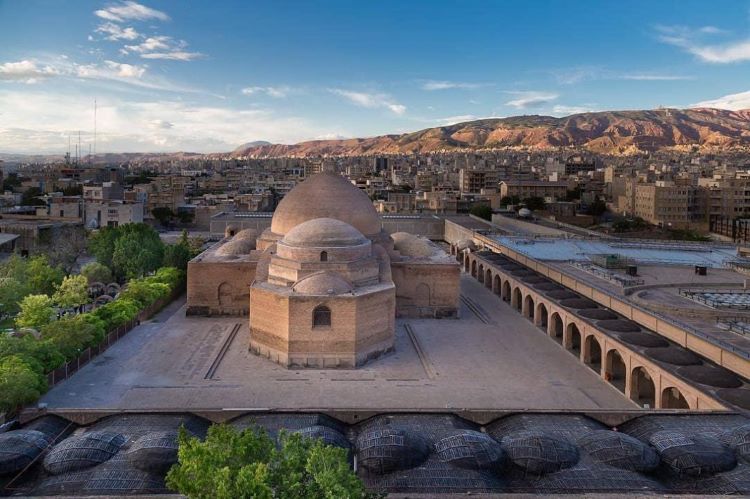
Domes of Gonbadkhanehs – Blue Mosque Iran – Tabriz
More about Blue Mosque
Blue Mosque of Tabriz – Visiting Hours
Every day from 9 a.m. to 7 p.m.
Attractions Near the Blue Mosque of Tabriz
Surely, the Azerbaijan Museum is a must-see. As this museum is home to iconic artefacts from pre-Islamic and Islamic eras, it is regarded as the second largest archeology museum in Iran after the National Museum of Iran. Also, historical houses in Tabriz are examples of best historical houses in Iran. Behnam House (Qadaki House), Heidarzadeh House, Nikdel House, Ganjei zadeh House, and Salmasi House (The Measure Museum of Tabriz) are among the traditional houses near the mosque. Kabud Bazar and Grand Bazaar of Tabriz are definitely worth visiting, too. In addition, Mausoleum of the Poets (or Maqbarat-o-shoara) is the mausoleum of 400 Iranian poets and literati, where you can enjoy the splendid architecture of the mausoleum.
Where to Eat Near the Blue Mosque
Restaurants in Kabud Bazaar
Yaqut Restaurant
Emaarat Restaurant
Like to see the Blue Mosque of Tabriz?
Then book a place on our 6-day Northwest Iran tour or our 9-day On and Off the Beaten Path tour.

